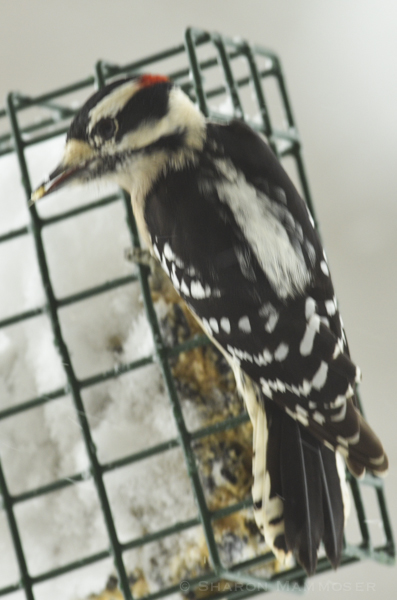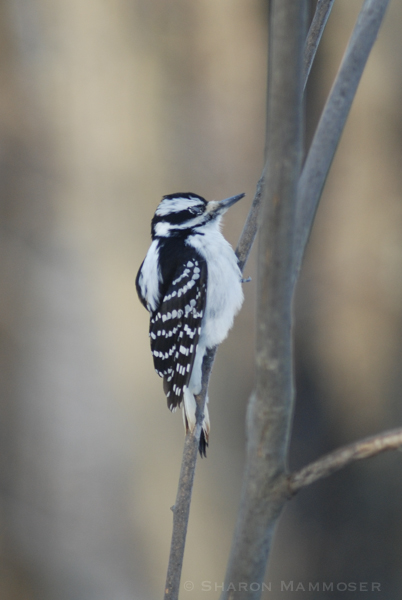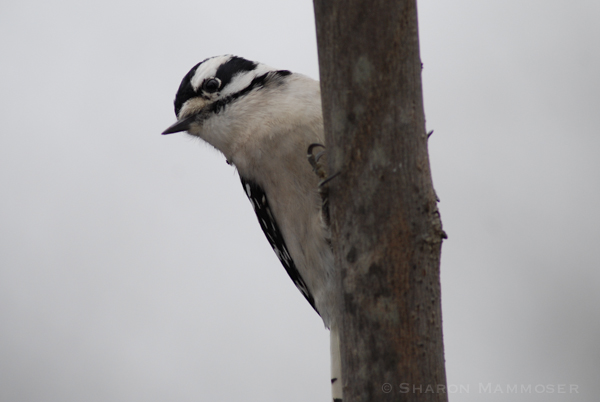The woodpecker featured in last week’s puzzler is definitely a tricky one, and one that is easily confused with another bird. If you looked at the title of the puzzler alone–a woodpecker with a white back, there are only two in North America that fit that description– hairy woodpecker and a downy woodpecker. But these two birds are identical except for two things–the overall size of the bird, and the size of their bill. Hairy woodpeckers are 9.5 inches long while downy woodpeckers are 6.5 inches long. In addition to a larger overall size, hairy woodpeckers have a bill that is nearly as long as the width of their head. Downy woodpeckers on the other hand, have a short bill.
If you see just one of these birds and have nothing to compare it to, look at the bill. If it seems really small, it’s likely a downy woodpecker. If the bill looks longer than its head–it’s a hairy woodpecker. Thus, the bird pictured in last week’s puzzler was a hairy woodpecker. Here are some comparisons:




Hairy woodpeckers eat a lot of invertebrates, including beetles, insect larvae, caterpillars, millipedes, grasshoppers, flies, ants, cockroaches and spiders. They supplement this with seeds, grains, nuts and tree sap. They move up the tree trunks or along thick tree branches, pecking on wood. When they detect a change in the resonance of sound, they home in on the tunneling insect under the bark.
While we’re on the subject of birds that you might see at your backyard feeders, let’s do another–this is a bird that has a crest like a cardinal, but is not bright red.


Definitely a Hairy Woodpecker for me. The bill size relative to its head is definitive
Thanks! I thought so too, but can see how the markings on the tail feathers add confusion.